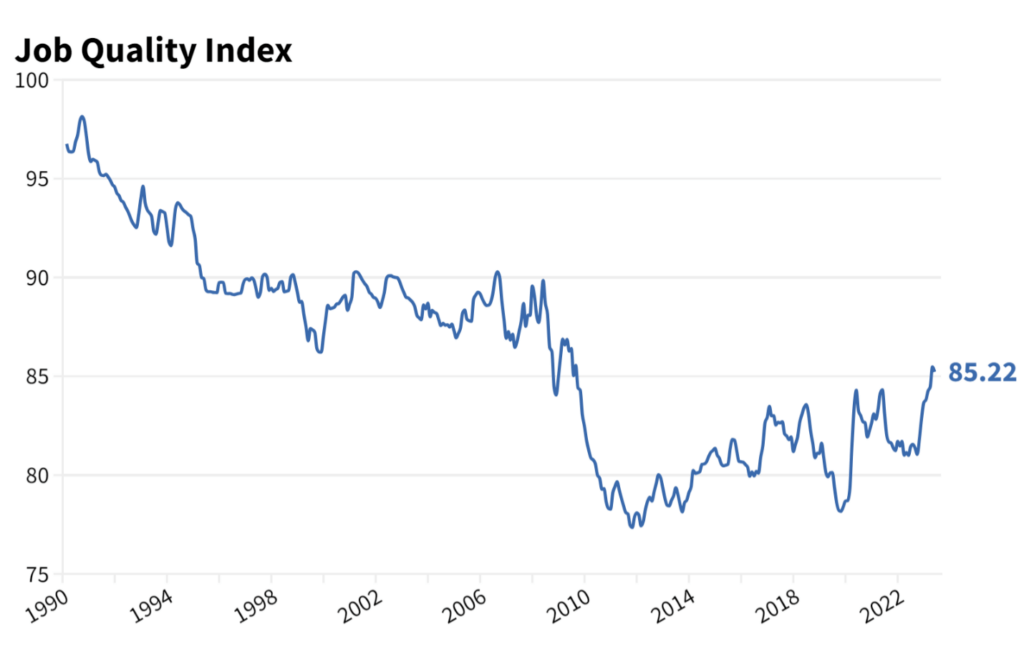WASHINGTON — The Coalition for a Prosperous America (CPA) today announced that the U.S. Private Sector Job Quality Index (JQI) for June was 85.22, down 0.3% from May. The JQI has leveled out over the past few months after a significant increase earlier in the year. Most of the job growth in June was from low-quality jobs that pay below the average wage in the health care and social assistance industry. Health care and social assistance added 59,800 jobs in June, but only 12,640 of these jobs are of high quality with above average wages and hours worked. The construction industry continues to be the source of most of both goods-producing and high-paying jobs created over the past several months as it added 17,900 high-quality jobs in June.
The average weekly wage for production and nonsupervisory workers in June was $977.74, an increase of 0.57% from May and up 4.14% over the past year. The current inflation rate of 3.0% is now below the rate of wage increases, which means that workers are gaining back some purchasing power after having it eroded over the past two years.
The Bureau of Labor Statistics (BLS) reported overall job gains of 187,000 in July and an unemployment rate of 3.5%. Hiring in construction remains strong as the industry added 19,000 jobs, accounting for all of the goods-producing jobs created in July. The factory building boom continues to produce high-paying construction jobs. As new factories come online, this will produce high-paying manufacturing jobs. Yet, manufacturing employment decreased by 2,000 jobs in July and has been flat over the past three months.
The Job Quality Index measures job quality for U.S. production and non-supervisory workers by comparing workers’ weekly wages to the mean weekly wage for all non-supervisory workers. Those jobs above the mean are classified as high-quality and those below the mean are low-quality. The index is calculated by dividing the number of high-quality jobs by low-quality jobs. An index of 100 means the number of high-quality production and nonsupervisory jobs is equal to the number of low-quality jobs. An index below 100 means that the economy includes more low-quality than high-quality jobs.
Over the past three decades, the JQI declined because the U.S. economy created more low-quality jobs than it has high-quality jobs. As shown in Figure 1, the JQI is down 11.9% from 1990 illustrating the disproportionate growth in low-wage, low-hour jobs.
Figure 1. Job Quality Index 1990-2023













